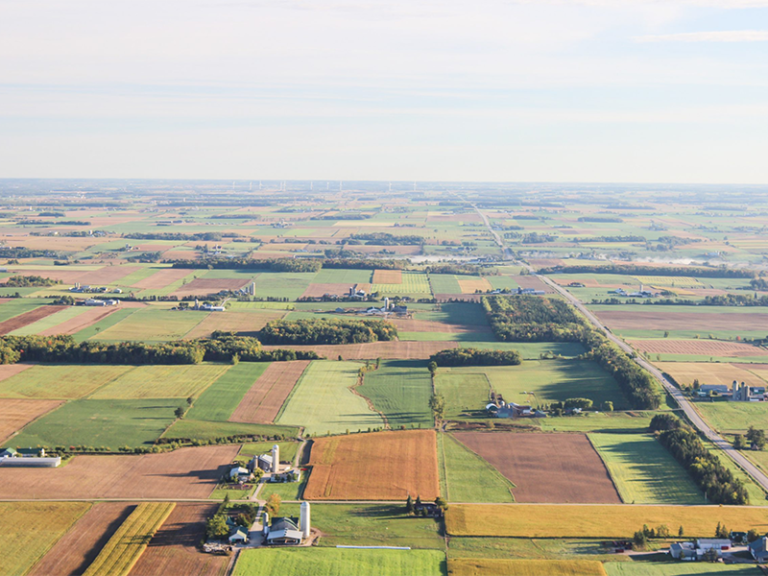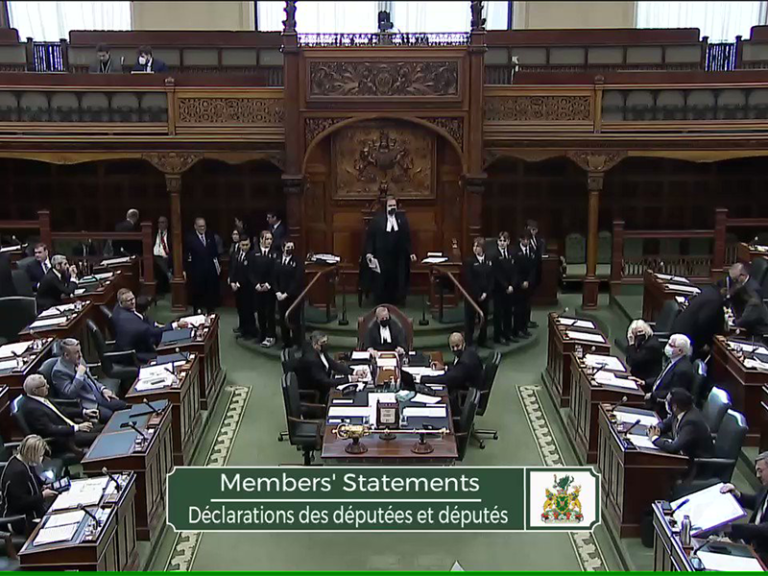First published: November 12, 2004
by Keith Oliver
This is the sixteenth in a series of articles about planning the growth and
development of human settlements, including Area C at the northeast corner
of Cobourg. In 30 years, when this two square mile, or 500 hectare area is
fully developed, Cobourg will be twice its present size.
By agreeing that traffic planning inside smaller human settlements is the
sole responsibility of traffic engineers, and by following over-simplified
traditional land-use planning practices, we are virtually guaranteeing the
continued loss of both the human-scale and the sense-of-community that has
plagued urban development in Ontario over the last three-quarters of a
century.
The most important single factor that determines both the characteristics
of vehicle movement and the level of traffic congestion is land-use. As
earlier articles in this series have attempted to explain, even the success
or failure of public transit is pre-destined by land-use. There is no
government rich enough to afford the subsidies required to make public
transit work when the supportive land-use has not been developed.
In the development of Area C, traffic planning must be carried out in close
co-ordination with land-use planning and together both must satisfy new
objectives w2hich are: the overall organization and design of roads shall
compliment and support the land-uses they serve; the road system must offer
the greatest possible choice of routes from point A to point B; within the
town limits the emphasis shall be on the smooth flow of traffic at reduced
speeds as opposed to increased capacity and higher speeds;
pedestrian-vehicle conflict shall be reduced wherever possible with
vehicles giving way to cyclists and pedestrians; and road design shall
contribute to the human scale of public places instead of detracting from it.
Cobourg’s unique road pattern.
In all of this Cobourg has a head start. Whether by conscious design or by
slow evolution as the town developed, Cobourg’s road pattern is unique in
its simplicity, in its ability to be easily understood and in the number of
clear choices a driver has when traveling from point A to point B. The
opposite extreme is Dundas Street in downtown Trenton where all traffic,
including transport trucks, entering the town on Route 2, must pass through
the central shopping street. The choice in Port Hope is not as limited, but
is still more limited than Cobourg.
In Cobourg you can travel North or South on William, Ontario, Division,
D’Arcy or Brook Road, and easily reach your destination. Traveling East or
West you have the choice of Elgin, University, King or Albert. Equally
important is the fact that there are a significant number of intersections
that offer multiple choices and the ability to change ones’ route.
Two desirable results are that traffic in Cobourg is dispersed instead of
being concentrated, and drivers have the choice of driving through the
downtown at a reduced speed, or avoiding the downtown altogether.
The constraints imposed by the location of the railway lines, the
Conservation Area, the Northam Industrial Park and Lucas Point, have all
contributed to Cobourg’s well organized road system. In locating major
arterial roads along one edge of these areas where the presence of
pedestrians is virtually non-existent, pedestrian-vehicle conflict is
greatly reduced. An improvement that would have reduced transport truck
traffic on Division Street north of the railway underpass and reduced the
need and cost of that road as a five lane arterial, would have been to
bring trucks into the Northam Industrial Park on a “trucks-only” road
running south from Elgin, west of the Lion’s Centre.
The challenge in the design of Area C will be to keep this level of choice
and to avoid land-use patterns that will cause heavy traffic and transport
trucks to be in conflict with residential uses, pedestrians and cyclists.
One particular challenge will be to create a truck access to Lucas Point
while respecting the ecological sensitivity of the wetlands in the centre
of Area C.
Are there roundabouts in Cobourg’s future.
One of the most important aspects of responsible planning is looking
forward to a time when the size, form and needs of Cobourg will be
different from those of today. One of the most impressive examples of this
happened in Toronto in 1915 when the Bloor Street Bridge and Viaduct was
built across the Don Valley. Both engineers and politicians, exercising
unusual foresight, designed and approved a structure that would accommodate
a future streetcar-line and subway-line. The latter was built 50 years
later and the visionary foresight saved the city three million dollars. The
promise of a more efficient form of public transport represented by the
underdeveloped bridge was a major factor in ensuring the orderly mixed
land-use development that took place along Bloor Street prior to the
construction the subway’s construction.
In designing Area C for the smooth flow of traffic at reduced speeds, an
optional type of intersection should be considered. According to a report
by the US Department of Transportation, “roundabouts” are now part of
traffic planning in eight US states, including Vermont. Experience has
found that they contribute to the uninterrupted flow of traffic at reduced
speeds and increased safety for all. Western Europe and Australia have
enthusiastically adopted roundabouts with France constructing them at the
rate of over 1,000 a year. The Dutch have developed a roundabout that
includes bicycle traffic.
Whether there are roundabouts in Cobourg’s future or not, the planning of
Area C should include the serious consideration of new goals, new planning
objectives and a new emphasis on creating a pattern of development that
will represent a break with the failed planning objectives of the past, and
maintain and enhance the highest possible quality-of-life for all of
Cobourg’s residents.
Keith Oliver can be reached at 905-377-0107 or oliver.symons@sympatico.ca,
and is available to speak with groups of interested individuals. At the end
of this series, a complete package of articles will be available to those
who forward their name, telephone number or e-mail address.
Note: Part 16


